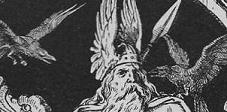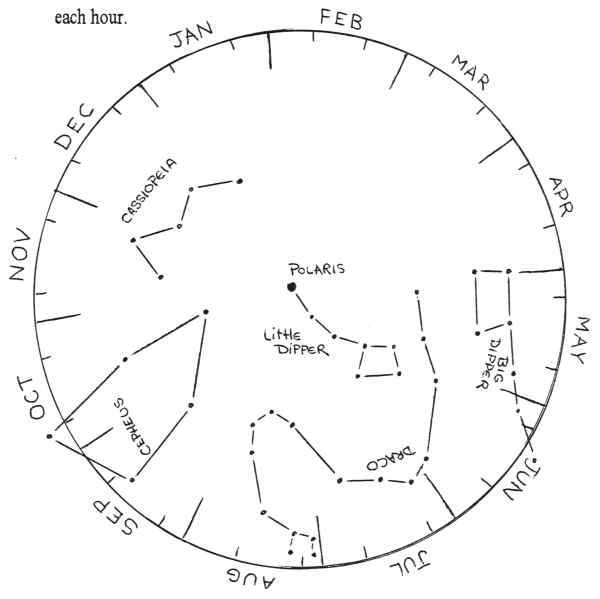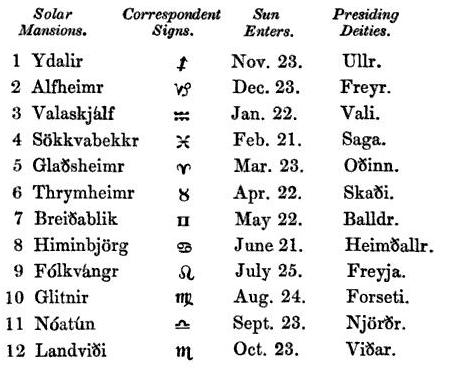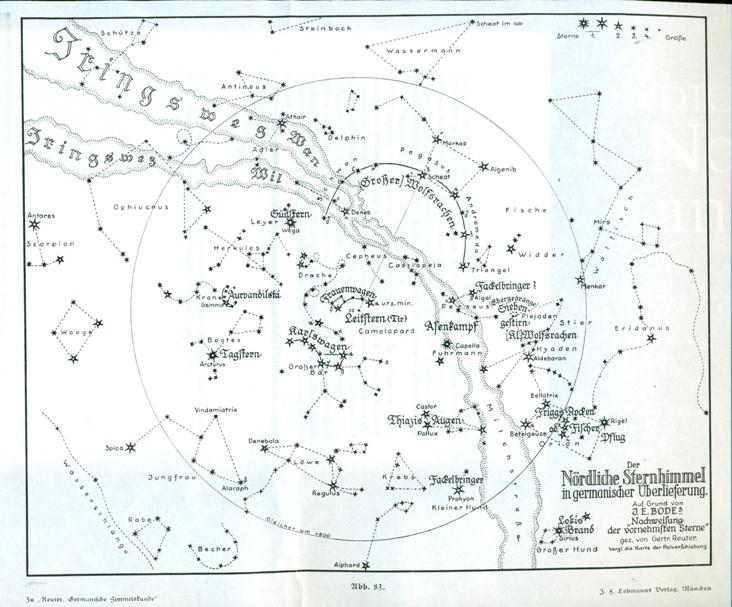The Poetic Edda: A Study Guide
The Speech of the Masked One

[PREVIOUS][MAIN][NEXT]
[HOME]
MS No. 2365 4to [R]
AM 748 I 4to [A]
Normalized Text:
Land er heilact,
er ek liggja sé
ásum ok ólfom nær
en í Þrúðheimi
skal Þór vera,
unz um rjúfask regin
Land er hæilagt,
er ek liggja sé
ásum ok okalfvm nær
en í Þrúðheimi
skal Þór vera,
unz of rjúfask regin
4. Land er heilagt,
er ek liggja sé
ásum ok álfum nær
en í Þrúðheimi
skal Þór vera,
unz of rjúfask regin
in Icelandic Poetry
“The Song of Grimnir”
The Yale Magazine, Vol. 16
“The Song of Grimner”
IV. Dear are the lands to Gods on high,
That neighb'ring to the Alfi lie.
On plains of Thrudheim Thor shall dwell,
While Gods their golden ages tell.
Lo! near the Aser and the cunning Elves,
Holy the land which spreadeth before my eyes
But Thor in glorious Thrudheim's ancient hulls
Shall dwell, till falleth the twilight of the gods.
in Edda Sæmundar Hinns Frôða
“The Lay of Grimnir”
in Corpus Poeticum Boreale
“The Sayings of the Hooded One”
4. Holy is the land,
which I see lying
to Æsir and Alfar near;
but in Thrundheim
Thor shall dwell
until the powers perish.
Ever in Thrudham Thor shall dwell till
the fall of the Powers.
in Edda Saemundar
“The Sayings of Grimnir”
in The Poetic Edda
“Grimnismol: The Ballad of Grimnir”
4. Holy is the land which yonder lies
near the world of gods and elves :
in the Home of Strength shall the Thunderer dwell,
even till the Powers perish.
4. The land is holy that lies hard by
The gods and the elves together;
And Thor shall ever in Thruthheim dwell,
Till the gods to destruction go.
in The Poetic Edda
“The Lay of Grimnir”
in The Elder Edda
“The Lay of Grimnir”
4. The land is holy which lies yonder,
near to Aesir and alfs;
in Thruthheim, there shall Thor ay dwell,
till draws nigh the doom of the gods.
4. The land is hallowed that lies near
The homes of gods and elves:
But Thor shall live in Land-of-Strength
Till the High Ones are all destroyed.
in The Poetic Edda
“Grimnir’s Sayings”
in The Poetic Edda, Vol. III: Mythological Poems
“The Lay of Grimnir”
4. The land is sacred which I see lying
Near the Aesir and elves;
But in Thrudheim Thor shall remain,
Until the Powers are torn asunder.
4. The land is hallowed
that I see lying
close to the Æsir and Elves
Still in Might's Realm
Þórr shall remain
until the old rule ends.
[HOME][GRÍMNISMÁL]
Carolyne Larrington, “Vafþrúðnismál and Grímnismál: Cosmic History, Cosmic Geography” in The Poetic Edda; Essays on Old Norse Mythology, 2002.
“Óðinn turns immediately to the fundamental relationship
between gods and men. Óðinn’s perspective on the human world is given in
the framing verses where he complains of his ill-treatment, but as he
begins to speak he envisages the ideal and splendid world of the gods,
‘a sacred land’ (st. 4:1). Although his list of the dwellings of the
gods offers textual problems,[1]
the world of the gods is exposed for the audience with twelve[2]
or thirteen halls and lands, each the property of a particular god. At
this stage the divine world is not distinguished by physical
features—mountains and rivers, forests and fjords, land forms which we
find elsewhere in mythological poetry—but rather by inhabited
settlements. Much like the tenth-century Norway, the ‘sacred land’
consists of a number of territories ruled by an autonomous lord, in
whose hall the social practices of the lordship are performed. Gods and
goddesses drink together (st. 8, 14); weapons are displayed (st. 9).
Divine property is inheritable; Skaði now rules over her father’s lands
(st. 11), justice is dispenses (st. 15), and treachery and malice are
eschewed (st. 12, 16). Nor is the obligation to avenge kin forgotten
(st. 17); since ragna rök is not yet at hand, Víðarr, Óðinn’s son,
occupies himself practicing his horsemanship. Training and tending to
one’s horses, hawks and hounds is a marker of aristocratic and leisured
status in the Eddic texts (cf. Þrymskviða st. 6 and Atlakviða st. 37;
see Russom). Gurevich sees the Scandinavaian mythological universe as
“an aggregate of farmsteads” (45), but certainly in Grímnismál there is
no apprehension of agricultural work, crop-growing or animal-raising.
The gods are too aristocratic to need to work.”
“Thus the divine world stands in a perfected and archetypal relation to
the flawed human world, in particular the hall of Geirrøðr where duties
of hospitality are neglected and strangers ill-treated rather than given
justice. That divine society should operate much as human society does
is to be expected. the gods have an archetypal and exemplary function
often overlooked, a function which tends to be obscured by the scandal
of Lokasenna and the trickerism of Óðinn. nevertheless, such
plural words for the gods as “bond” (‘bonds’), “höpt” (‘fetters’), and
“regin” (‘rulers’) suggest a community which lives and works
closely together."
[1]
The second half of st. 4 can scarcely fit the first half, and some
disturbance is apparent in st. 6 (de Vries 1952 and Ralph).
[2] According
to the poem’s internal numeration.

Dispelling (or perhaps perpetuating) an Old Theory
Religion of the Northmen by Rudulf Keyser, translated by Barclay Pennock, 1854:
The Northmen imagined twelve of the Æsir to be superior, and,
as it were, to form a Council of Gods; but which they were is nowhere
said with certainty. In the ancient poem of Grimnismal there are twelve
celestial abodes enumerated by way of preeminence, and in the Elder
Edda, twelve names by which Odin was especially designated. This
preference shown in the Mythology for the number twelve, has appeared to
several interpreters to refer to the divisions of the year among the
heathen Northmen, and their reckoning of the sun's course. According to
their theory, each of the twelve Æsir was the director of his respective
month; the twelve names of Odin were names of the months; and the twelve
celestial abodes denoted the twelve signs of the zodiac, which the sun
passes through annually.* Magnusen has gone still farther, and referred
the fifty-two names of Odin which are enumerated in the Grimnismal, to
the fifty-two weeks of the year, the seventy-three names of Dwarves
which occur in the Voluspa, to another division of the year into
seventy-three Fifths, or sections of five days each, and finally, the
thirteen names of the Valkyrjur in the Grimnismal, to the thirteen lunar
changes of the solar year. On this he has built a complete heathen
Calendar, based upon the solar year. It is tolerably certain that the
heathen Northmen divided the year into twelve months, and it is most
likely that the number twelve in the Æsir Mythology is in connection
with this division; that they also made use of a division of time
consisting of five days [fimt] is very probable ; but that they should
have understood how to compute the solar year correctly, and especially
that they should have had distinct ideas of the signs of the zodiac, as
the heathen Calendar set up by Magnusen supposes, is very doubtful.
* [The following is the order of the twelve celestial abodes in the
Grimnismal, arranged as "Solar Houses" corresponding to the signs of the
zodiac, by F. Magnusen, in his Eddaucre, Vol. III., p. 244:

See Magnúsen's translation of the Elder Edda, Vol. I, the Interpretation of Grimnismal; and his "Specimen Calendarii Gentilis'' at the conclusion of the Arna-Magnæan edition of the Elder Edda, Vol. III.
"The Edda" by Karl Lottner, Fraser’s Magazine, 1861
“…Such theories of development, ..though they are familiar to modern German thinkers, were certainly as foreign to the old Norsemen, as the ingenious astronomical speculations of Finn Magnussen, who is of opinion that not .only are the twelve heavenly abodes mentioned in the Grimnismal the signs of the Zodiac, but that the twelve months are hidden in the one ox, eight salmon, and three pails of mead (1+3+8=12), which the god Thorr consumed with his usual appetite, at the visit which he paid to the giant Thrymr.”
“The Teutonic Tree of Existence” by Karl Blind, Fraser’s Magazine, 1877
"In the 'Song of Grimnir' we get a fuller notion of the World-Tree. That lay has been chiefly used for the astronomical interpretation of the twelve Germanic gods, as representatives of the twelve months ; in other words, of an old Northern Zodiac. The contact of the Germanic Pantheon, not only with the early Indian and Greek, but also with the Egyptian, Assyrian and other non-Aryan creeds, is thus additionally strengthened. It is in this remarkable Grimnir's Song —(whose description of the doors of Walhalla, and of the blessed heroes that issue from it, I believe contains also an arithmetical puzzle embodying the numbers XII. and III.; in other words, an astronomical idea and the idea of a Trinity)—that the great Tree of Existence is very clearly depicted."
Northern Antiquities
by Paul Henri Mallet, translated by Sir Walter ScottChap. 17.—The twelve (or it may be thirteen) celestial mansions described in the Grimnis-mal, some of which are mentioned in this chapter of the Prose Edda, are regarded by Finn Magnusen—who has a marked predilection for the astronomical method —as the twelve signs of the zodiac, and arranged as follows:—
Celestial Tutelary Corresponding to the In which the
Mansions. Deities. Sign of the Zodiac. Sun enters.
1. Ydalir Ullur Sagittarius Nov. 23.
3. Alfheimr Frey Capricomus Dec. 23.
3. Valaskjalf Vali Aquarius Jan. 22.
4. Sokkvabekkr Saga Pisces Feb. 21
5. Gladsheimr Odin Aries March 28.
6. Thrymheimr Skadi Taurus April 22.
7. Breidablik Baldur Gemini May 22.
8. Himinbjörg Heimdall Cancer June 21.
9. Folkvangr Freyja Leo July 25.
10. Glitnir Forseti Virgo Aug. 24.
11. Noatún Njord Libra Sept. 23
12. Landvidi Vidar Scorpio Oct. 23.
The Grimnis-mal positively designates Valaskjalf as the third mansion, Sokkvabekk as the fourth, &c, in the order that Finn Magnusen has arranged them, though we doubt whether he be strictly warranted in making Ydalir the first, and Alfheim the second mansion. The fourth, fifth, and sixth strophes of the Grimnis-mal are, literally, as follows:—
4. The land that I see lying (before me) near the Æsir and Elves is holy. But in Thrudheim shall Thor remain until the Gods perish.
5. Ydalir it is called, where Ullur hath built him a hall. In the beginning (of the world) the Gods gaye Alfheim to Frey when he was cutting his teeth.
6. The third habitation is that where the blithe Gods roofed the halls with silver: it is called Valaskjalf, which was chosen by the God (As) in the beginning (of the world).
7. The fourth is called Sokkvabekk, &c.
Several passages in the Eddas and the Skaldic poems show that Valaskjalf is here meant for Valhalla; the god who chose it (for his abode) can therefore be no other than Odin. Finn Magnusen, however, assigns Valaskjalf to Odin's son Vali. [We presume because Valaskjalf might be made to signify Valis Shelf.] He also makes Ydalir the first mansion, and Alfheim the second, though we might obviously conjecture with much the the same degree of plausibility that Thrudheim is designated as the first habitation, the second being either Ydalir or Alfheim, probably the former. At all events, by assigning the second mansion to Frey, Finn Magnusen makes the Sun god correspond—and it must be confessed very appropriately—to the winter solstice, when the sun is, as it were, annually born and may, therefore, be represented as an infant cutting its teeth. Forseti, who holds the scales of justice so perfectly equipoised, will also, by this arrangement, very appropriately correspond to the autumnal equinox, though we do not recollect that justice is any where typified in the Scandinavian, as it is in the Grecian mythology, as a being, either male or female, holding a pair of scales. Odin, who here figures as the zodiacal ram, corresponds to the venial equinox, and Heimdall to the summer solstice, although other writers who have employed the astronomical method for the explanation of Scandinavian myths make Baldur correspond to it; his death being in their opinion evidently meant to typify the wending of the sun on the 21st of June. Hence the custom, still kept up in southern Germany and the Scotch Highlands, of lighting bale fires at Midsummer, on the day selected by the Catholic Church to celebrate the nativity of John the Baptist.
In the third chapter of the Prose Edda Niflhel is represented as being "below in the ninth world;" and in the thirty-fourth chapter we are told that Odin cast Hela into Niflheim, and " gave her power over nine worlds." In the forty-fifth strophe of Vafthrudnis-mal, the giant tells Gangrad that he has been in nine worlds. These allusions, it must be Confessed, are both obscure and contradictory; nevertheless Finn Magnusen gives us a systematic classification of the nine worlds of regions which, according to his notion, were regarded by the Scandinavian mystagogues as constituting the universe. He in fact furnishes us both with a ternary and a nonary vertical division, as follows:
1. Ljosalfaheim, in which he places Gimli, where righteous men, after Ragnarok, are to abide with Surtur, the Supreme Deity!! The heaven Vidblainn separates this region from,
2. Muspellheim, in which are the Flame-spirits!! or Muspell's sons, who are also under the immediate dominion of Surtur, both these regions being uncreated. The heaven Andlang separates Muspellheim from
3. Godheim, where the Msir abide, and which is, " properly speaking, the ethereal or starry heavens."
II. THE MEDIAL WORLD.
4. Vanaheim or Vindheim—the abode of the Vanir, which he regards as the Spirits of Air; the region itself being the sky or the terrestrial atmosphere.
5. Mannheim; the earth; the abode of mankind.
6. Svartalfaheim; the subterraneous parts of the earth — holes, caverns, &c.; the abode of the Elves of Darkness.
7. Jotunheim; the abode of giants. In this region is also the great ocean with the Midgard serpent.
8. Helheim; the abode of death.
9. Niflheim; the deepest region also uncreated, in which are Hvergelmir and Nastrond.
If it be asked what authority the learned Icelander can adduce for this classification we must unhesitatingly answer, not the slightest. The distinction which he makes between Ljosalfaheim, and Muspellheim, placing in the former, along with the souls of righteous men, the Elves of Light—or rather leading us to infer that it was originally or will be their abode; and in the latter beings which he is pleased to term Flamespirits, is totally unwarranted. That the Vanir are the Spirits of Air dwelling in the atmosphere (Vanaheim) is a mere conjecture, a plausible one, perhaps, but still a conjecture, and it will be needless for us to point out the inconsistency of placing Jötunheim and "the earth-encircling ocean" under the earth, Finn Magnusen himself, when he follows the horizontal instead of the vertical division, ranging them on the same plane with it. In short, this classification rests on the most groundless assumptions imaginable, and can only be ascribed to that theorizing mania, which it is much to be regretted that a writer of Finn Magnusen's learning should be so apt to indulge in.
We think, ourselves, that the only admissible division would lie a ternary one, viz.:—
1. The Super-terrestrial Region, or the heavens—the abode of the mundane deities.
2. The Terrestrial Region, which was regarded as an horizontal circular plane. In the middle lay the earth (Midgard), the abode of mankind: the Elves of Darkness and the Dwarfs— probably two designations of the same mythological beings— dwelling beneath its surface in caverns and other subterraneous places. The earth, we are expressly told, was encircled by the vast ocean, the outer shores of which formed the cold, cheerless, and mountainous region of Jotunheim, the abode of the Frost and Mountain Giants, and other typified principles of evil.
3. The Sub-terrestrial Region, or Helheim, the abode of Hela, or Death.
Muspellheim and Niflheim lay without the organized universe, and were obviously regarded as the primordial spheres or material regions of light and darkness, of an active and a passive principle—both mere modifications of matter—the antagonism of which produced this universe, with the Æsir, Vanir, Giants, Dwarfs, and other mythic beings that were popularly supposed to be located in its various regions, though they were no doubt regarded by the initiated as the mere symbols of antagonistic elements .
* Yggdrasill's three roots perfectly correspond to this ternary division. One taking its rise in the Super-terrestrial Region, another at the outer part of the Terrestrial Region, and the third in Helheim; Hela, according to the Grimnis-mal 31 dwelling under it.
For a Detailed
Investigation of Old Norse Views on Cosmic Geography,
Please see
Mythic Cosmology
Vigfússon also sees a reference to the Zodiac in the Eddic poem Sigurdrifumál:
Guðbrandur Vigfússon, Corpus Poeticum Boreale, 1883:
"Verses 3-16 are the cream of the poem; the twelve Celestial Dwellings. One cannot help thinking of the twelve Zodiacal Signs. The names are quite different from those of the Spell Song."
The “Spell Song” mentioned here is Sigurdrifumál, which reads:
13. Hropt [Odin] read them, graved them, thought them out from the lees that had leaked out of Cleardripper's skull and out of Hodd-rofni's horn.
14. He stood on the cliff, holding a sword, and a helm on his head. Then spake Mim's Head . . . the first wise word, and told the stares true.
15. They were engraven on the shield that stands before the shining God, on Allwaker's ear, and Allswift's hoof, and on the wheel that turns under Hrungnir's car, on Sleipnir's teeth, and on the sledge-bands,
16. on the bear's paw, on Bragi's tongue, on the Wolf’s claw, and the Eagle's beak, on the bloody wings, and the Bridge's end [sporðr literally “fishtail”]; on the midwife's palm, on the healing foot-print,
17. on glass and gold, on men’s talismans, on wine and wort, and the Sibyl's seat; on Gungnir's point, and Grani's breast; on the Norn's nail, and the owl's beak.
18. —All that were engraven were scraped off, and mixed with holy mead, and sent away on every side. The Anses have some, the Elves have some, some the wise Wanes have; mortal men have some.
19. There are Beech-runes, Help-nines, Love-runes, and great Power-nines, for whomsoever will, to have for charms, pure and genuine, till the world falls in ruin. Profit by them if thou canst.
Of these verses, the same author writes in the Cleasby/Vigfusson Dictionary, p. 778, s.v. stjarna:
“The names in the old lay Sigrdrifumal 15 and beginning of 16 are, we believe, astronomical —“the Ear of Arvak”, the “Hoof of Alsvinn” (the Sun Horses), the “wheel under the Chariot of Hrungnir”, the “Teeth (or ‘Reins’) of Sleipnir”, the “Sledge Harness”, the “bear’s Paw”, the “Tongue of Bragi”, the “Wolf’s Claw”, the “Eagle’s Nose”, and perhaps others.

1932 Otto Siegfried Reuter
Die Germanische Himmelskunde
[PREVIOUS][MAIN][NEXT]
[HOME]